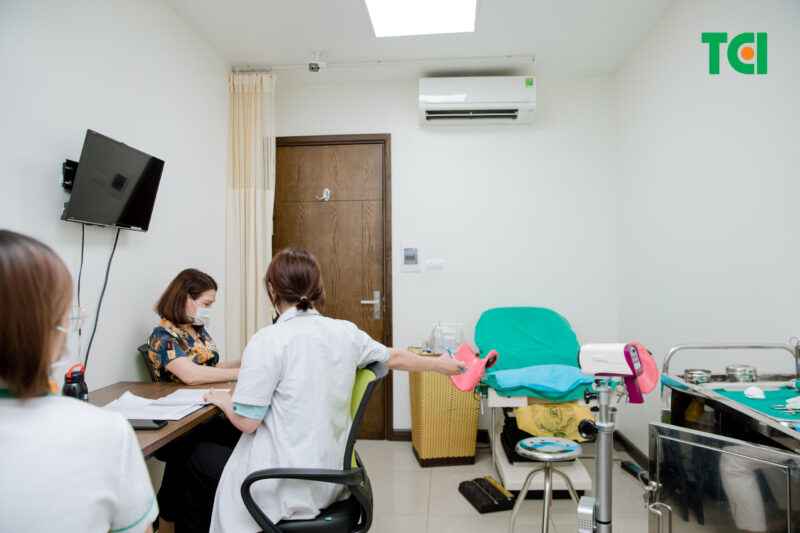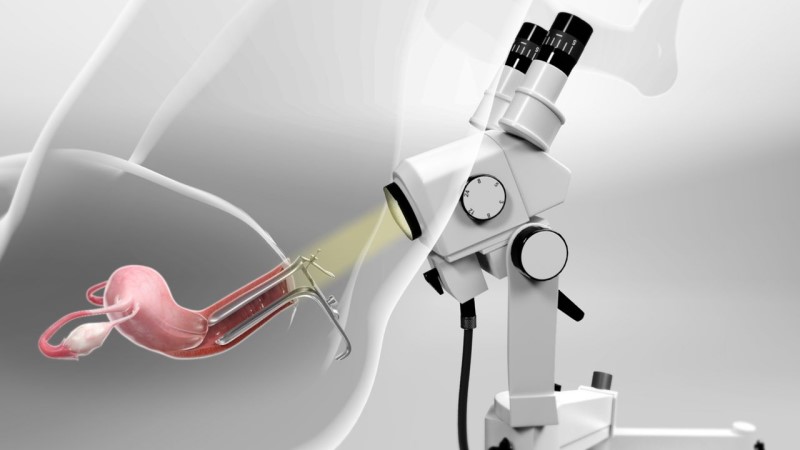Cervical cancer screening is considered the most effective way for women to detect the risk of cervical cancer early on, enabling timely monitoring and intervention. Do you know how cervical cancer screening is conducted? Let’s explore it further in this article.
1. Importance of Cervical Cancer Screening
Cervical cancer screening is a method of screening to detect abnormal cells, precancerous cells in the area of the cervix (the narrow passage connecting the vagina to the uterine area). Normally, the cervix appears pale pink with a thin, flat layer of cells. The cervical canal is composed of a type of cell called squamous cells. At the junction between these cells, abnormal cells or precancerous cells often appear, leading to cervical cancer.
Regular screening methods are the best way to detect cervical cancer early. Regular reproductive health check-ups and gynecological examinations have been proven to help detect and treat cancer early. Detecting cancer at its early stages significantly improves the success rate of treatment, prevents the risk of cancer progression, and metastasis to nearby areas.
In the early stages of cervical cancer, symptoms often overlap with other gynecological inflammatory diseases, leading patients to neglect gynecological examinations and cervical cancer screening in a timely manner. This affects the effectiveness of treatment as well as the cost, time, and health of the patients. Therefore, experts always recommend regular gynecological check-ups and cervical cancer screening after the age of 25.

Cervical cancer detected at an early stage has a five-year survival rate of over 90%.
2. Methods of Cervical Cancer Screening
2.1 Gynecological Examination
Symptoms of early-stage cervical cancer are often subtle, leading to the disease being detected only in later stages. Therefore, regular gynecological check-ups every 6 months to 1 year are recommended for women of reproductive age.
Although routine gynecological examinations cannot definitively determine whether a patient has cervical cancer or not, they help doctors easily assess and detect early lesions or inflammations. This facilitates appropriate follow-up examinations.
2.2 Colposcopy
This method involves observing the cervical area using specialized magnifying equipment in gynecology. Colposcopy provides an enlarged image about 10-30 times larger than reality, making it easier for doctors to observe abnormalities that are difficult to detect with the naked eye. Additionally, doctors can use 3-5% acetic acid and 2% lugol solution to accurately locate cervical lesions.
If abnormalities are detected during colposcopy, doctors will take small tissue samples for biopsy. These tissue samples will be stained and examined under a microscope to detect malignant cells for accurate diagnosis.

Colposcopy is one of the diagnostic methods that helps detect abnormalities in the cervix of women early on.
2.3 Pap Smear Test
This is the most common type of test that can help detect changes in cells that may lead to cervical cancer. To perform this test, doctors will collect a sample of cells from the cervix. The patient lies on the examination table, with knees bent and feet resting in stirrups. The doctor then uses a specialized tool called a speculum to gently open the vagina to visualize the cervix. A soft brush or spatula is then used to collect cells from the cervix, which are sent to the laboratory for analysis to detect the presence of HPV virus.
2.4 Human Papillomavirus (HPV) Test
This test helps detect early strains of HPV virus related to the risk of cervical cancer in women. The HPV test is performed based on a sample of cells taken from the cervix, extracted using an analyzing machine to accurately determine the presence of HPV virus.
HPV testing for cervical cancer does not completely confirm whether a woman has cervical cancer or not, but it helps to detect existing abnormalities early, thereby enabling preventive measures, monitoring, and early treatment.
HPV test is often performed in conjunction with Pap smear test.
3. Who Should Experience Cervical Cancer Screening
The following groups should pay particular attention to this screening:
– Women in middle age who are at high risk and have not undergone previous cervical cancer screening methods. However, women aged 21 and above can also undergo screening.
– Women with abnormal symptoms such as irregular bleeding, abnormal bleeding outside of menstrual periods.
– Experiencing pain during sexual intercourse.
– Women with chronic vaginal infections.

Women aged 21 and older should pay attention to cervical cancer screening.
To meet the demand for early detection of cervical cancer, TCI – Thu Cuc Healthcare System has implemented a comprehensive cervical cancer screening package. With a team of highly qualified and experienced doctors and modern medical equipment, Thu Cuc TCI ensures quick and accurate screening results. Therefore, patients can feel completely assured when experiencing medical services here.
We hope this article has provided you with useful knowledge about cervical cancer screening. Women should undergo this regular screening to timely detect and treat the disease while it is still manageable.








